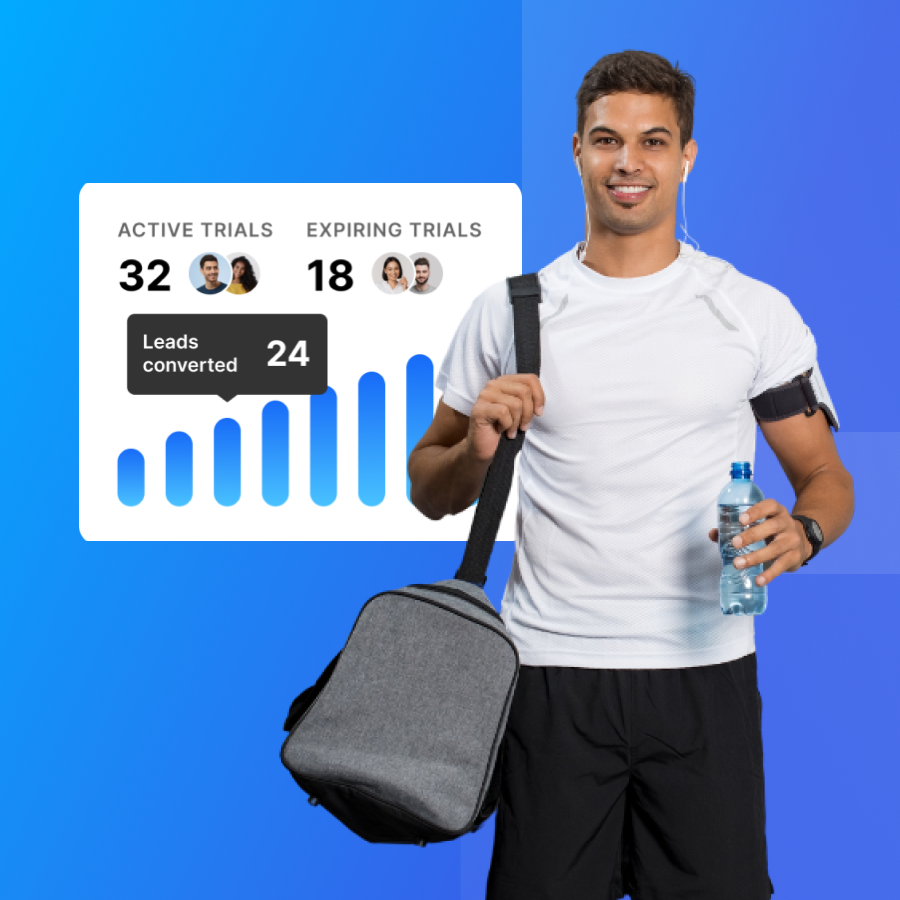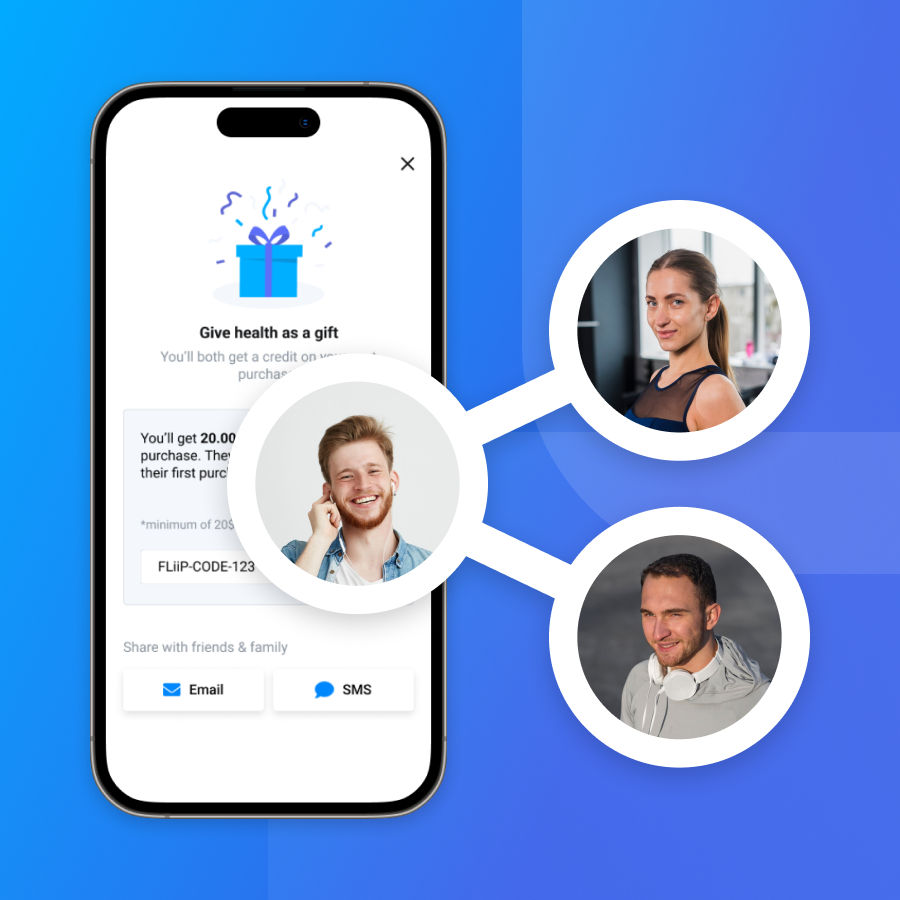The Psychology of Sales: How to Sell More Gym Memberships

For many gym owners, selling gym memberships can get a little sticky. It’s not that you or your team can’t sell; it’s just that those sales conversations can get awkward fast. You’ve tried every script under the sun and experimented with tactics, and now, you’re standing there wondering which way to step next to scale your business.
Selling doesn’t have to feel like you’re in a pressure cooker. The secret to sales is understanding the psychology behind it, especially in a space as competitive as the fitness industry. It’s about connecting, understanding, and leveraging those insights to stand out. No arm-twisting, no pushy pitches, just clear, comfortable conversations that leave everyone feeling good, no matter how they end.
The Problem with Selling Gym Memberships
Humans are complex creatures (surprise, surprise), and figuring out what makes us tick, especially in a sales convo, isn’t something you can master overnight. That’s probably why those sales scripts seem so tempting; they promise a way to bypass all that messy human stuff and get straight to the sale.
But relying on a script means you might miss out on actually connecting with the person in front of you. It can feel like you’re reading lines with them instead of genuinely engaging. And if you’ve ever tried training your team with these scripts, you know it can end up feeling more like a comedy of errors than a smooth sales process.
Good selling is about truly being there with your prospect, creating that real, human connection, just like you do when you coach.
The Psychology of a Potential Gym Member
Understanding the psychology of a potential gym member is like unlocking a treasure chest—you get access to the real gold: what drives them, scares them, and ultimately, what gets them to commit.
1. The Starting Line: Fear and Aspiration
Every potential member starts from a place of mixed emotions. There’s the excitement of change, tinged with fear and anxiety. Some of the most common fears about joining a gym are:
- Fear of judgment (about their fitness level, body type, how they look, etc.)
- Fear of not knowing what to do
- Fear of injury
- Fear of interacting (social anxiety)
- Fear of not fitting in
- Fear of pain (muscle soreness)
- Fear of failure
People are not just looking to lift weights; they’re looking to lift their spirits, to transform their bodies and health. They want to believe that this time, things will be different. Your job? To be the guide that assures them, “Yes, you can do this.”
2. The Power of Belonging
Humans crave connection and belonging. When someone considers joining your gym, they’re not just shopping for a place to sweat; they’re looking for a community. They want to see themselves in your current members—people who laugh, struggle, and persevere. Show them that your gym is more than a collection of equipment; it’s a tribe ready to welcome them with open arms.
Learn how to build a lasting relationship with gym members through community!
3. Goals and Dreams
Every potential member walks in with a dream. Maybe it’s to run their first 5K, to feel confident in their skin, or to reclaim their health. Understanding these aspirations—and the underlying motivations—is crucial. When you speak to them, it’s not about selling a membership; it’s about selling a vision of what they can achieve.
4. Social Signaling
For some, joining a gym serves as a statement, a way to signal to others the importance they place on health and fitness. It’s a declaration of values and priorities, even if using the gym’s facilities doesn’t align with this outward expression. The membership itself becomes a badge of sorts, symbolizing an aspiration towards a healthier lifestyle.
5. The Fear of Commitment
Committing to a gym membership can feel like a big step. It’s not just about the money; it’s the internal pledge to change one’s lifestyle. Many fear the commitment because they doubt their ability to stick with it. Your role is to ease those fears, showing them the small, manageable steps that lead to big changes.
7. Seeking Guidance and Support
Finally, remember that most potential members are looking for guidance. They might be intimidated by the equipment or unsure about how to start. They’re seeking a mentor, someone who says, “I’ve got you, let’s do this together.” Your gym, team, and approach should all communicate that support and readiness to guide them on their journey.
Emotion vs. Logic: Balancing Emotional Appeal with Logical Reasoning in Sales Pitches
First, let’s talk about emotion. Buying decisions, especially those as personal as joining a gym, are often driven by emotion. It’s about how the prospect feels when they think about your gym, your community, and the potential for their own transformation. To tap into this:
- Tell Stories: Use the success stories of current members to paint a vivid picture of the journey ahead. Let prospects see and feel the joy, the struggles, and the triumphs.
- Create an Experience: From the moment they walk in or visit your website, make it an experience. Let them envision themselves as part of your gym family, achieving their goals.
- Address Fears and Desires: Speak directly to the emotional roadblocks they might be facing, like fear of failure or a desire for belonging, and show how your gym helps overcome them.
Then, there’s logic. It provides the solid ground for the emotional leap. After all, even the most heart-tugging appeal needs to make sense in the cold light of day. Here’s how you weave in the logic:
- Show Value Beyond Price: Break down what members get for their investment, not just in terms of gym access but in support, community, and expertise.
- Highlight Convenience and Accessibility: Talk about location, hours, amenities, and any other logical benefits that make your gym the smart choice.
- Provide Evidence: Use data, testimonials, and other forms of proof to back up your claims. This could include success rates, member testimonials, or even a tour of your well-maintained, state-of-the-art facilities.
The Perfect Blend
The magic happens when you blend emotional appeal with logical reasoning. Imagine a prospect who’s emotionally drawn to the idea of joining your gym because they’ve seen transformation stories that resonate with them. Now, combine that with the logical reassurance that they’re making a wise investment with flexible membership plans, a convenient location, and a supportive community. This creates a compelling narrative where the heart and the head agree, making the decision to join feel as good as finishing that first workout.
In Practice
When crafting your sales pitch, start with the emotional draw—get them to feel. Once you’ve captured their heart, use logic to reassure their mind. It’s about creating a narrative where each member sees the value in joining and feels the call to be part of something bigger than themselves.
How to Build Rapport and Trust with Prospects
The first step in building a meaningful connection is showing genuine interest in your prospects’ fitness aspirations and concerns. Engage in conversations that delve beyond the surface to understand their motivations, fears, and what they seek in a gym. This personal approach signals that your interest in their fitness journey is authentic.
Master the Art of Listening
Listening is more than just hearing words; it’s about understanding the message behind them. Give your prospects undivided attention, acknowledge their fitness goals, and respond thoughtfully. This level of attentiveness demonstrates that you value their input and are committed to helping them achieve their goals.
Be Consistent in Your Interactions
Consistency breeds trust. Be it through follow-up messages, tours around the gym, or simply being present for questions, consistent, reliable interactions build a foundation of trust with prospects. It reassures them that they can count on you and your gym to support their fitness journey.
Empathize with Their Fitness Journey
Empathy is a powerful tool in establishing rapport. Recognize the challenges and vulnerabilities associated with starting a new fitness routine. By empathizing with their situation, you create a safe and supportive space where prospects feel understood and encouraged.
Maintain Honesty and Transparency
Honesty in discussing membership options, benefits, and answering any concerns plays a significant role in building trust. Prospects will appreciate the clarity and straightforwardness, making them more comfortable with the decision to join.
Celebrate Fitness Journeys
Let prospects know that their achievements, no matter how small, will be celebrated. This creates an anticipation of success and recognition within your gym’s supportive community.
Offer Personalized Attention
Tailoring your approach to fit the individual needs and preferences of prospects shows that you are attentive and care about providing them with the best possible gym experience. Personal touches can make all the difference in their decision-making process.
Persuasive Communication Techniques
Persuasive communication is an art form in itself, especially in the fitness industry, where the competition is tough, and every gym is vying for attention. To truly stand out and connect with potential members, leveraging the power of persuasive language and understanding psychological principles is key.
Harnessing Persuasive Language and Psychology
- Social Proof: Humans naturally look to others when making decisions. Incorporating testimonials, success stories, and member shoutouts in your marketing and sales pitches can massively boost your gym’s attractiveness. It’s like saying, “Don’t just take our word for it; look at all these people who’ve achieved their fitness goals with us.”
- Likability and Rapport: People buy from those they like and trust. Train your team to build rapport quickly by finding common ground with prospects, showing genuine interest in their fitness goals, and being friendly and approachable in every interaction.
- Reciprocity: This principle suggests that people feel obliged to give back when something is given to them. Offering a free trial, a complimentary personal training session or helpful fitness tips can make prospects more inclined to reciprocate by signing up.
Body Language and Presence
Beyond words, how you and your team present yourselves can significantly influence a prospect’s decision. Non-verbal cues play a huge role in building trust and confidence.
- Open Body Language: Encourage your team to adopt open and welcoming body language. This means no crossed arms, maintaining good eye contact, and facing the prospect directly. Such gestures signal honesty and openness.
- Mirroring: Subtly mimicking the prospect’s body language can create a feeling of empathy and understanding. If they lean in, lean in slightly as well; if they nod, nod back. It shows you are in sync with them.
- Confident Posture: Standing or sitting straight, with shoulders back and head held high, exudes confidence and competence. It tells prospects, “We know our stuff, and you’re in good hands.”
- Genuine Smiles: Never underestimate the power of a sincere smile. It’s welcoming, disarming, and creates a positive atmosphere that can make prospects feel more at ease.
Training your team to master these persuasive communication techniques and to be aware of their body language and presence can transform your gym’s sales approach. It’s about creating an environment where prospects feel understood, valued, and ready to take the leap with you.
FOMO Strategies to Sell Gym Memberships

Today’s buzz is all about FOMO—the Fear of Missing Out. It’s a powerful drive that pushes everyone to keep up with the latest trends, whether it’s the newest fashion, dining hotspots, vibrant nightlife, or sculpting that perfect gym body for social media fame. Gyms are cleverly leveraging this trend to their advantage, crafting offers that are too tempting to pass up.
Take the classic gym promo: pay for 12 months and snag an extra 2 months for free. Why does this work? It plays right into the FOMO vibe and the stark reality that despite best intentions, a whopping 95% of people drop their gym routine within the first three months. The allure of “free” months acts as a sweetener to seal the deal, even though the stats show that even the most dedicated gym enthusiasts typically clock in about 7 months of actual gym time in a year.
This tactic capitalizes on our fear of missing out on a great deal and our aspirations to be part of the gym culture that’s glorified on every social media platform. Gyms aren’t just selling access to equipment; they’re selling the dream of a better, fitter version of ourselves that we eagerly want to share with the world.
Incorporating FOMO into your sales strategy doesn’t have to feel like a gimmick. You need to understand what drives people and offer them a chance to be part of something special – whether that’s a limited-time offer, exclusive access to new classes, or the opportunity to achieve and share their fitness journeys. In doing so, you can create a sense of urgency and exclusivity that resonates deeply with today’s social-media-savvy generation, encouraging them to jump on board before the opportunity slips away.
While FOMO can be an effective strategy, keep it ethical. Make sure that the scarcity or exclusivity you’re promoting is genuine. Misleading prospects can harm your gym’s reputation in the long run. The goal is to encourage action by highlighting what makes your gym an exciting, vibrant community to be part of—not to pressure someone into making a decision they’re not ready for.
Conclusion
Boosting gym membership sales isn’t about slick sales pitches or fancy marketing. You have to make real connections. People who feel understood and supported are way more likely to sign up and stick around. At the end of the day, you want to help your prospect see that joining your gym is a step toward their goals, whether that’s getting fit, feeling better, or just being part of a community that cares. Keep it real, listen well, and be genuine. That’s how you turn prospects into members and members into long-term gym buddies.



